
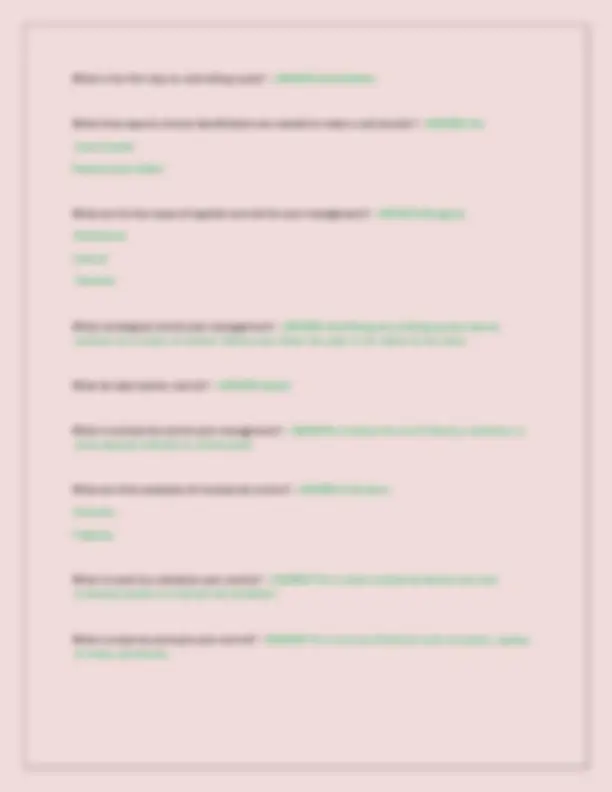
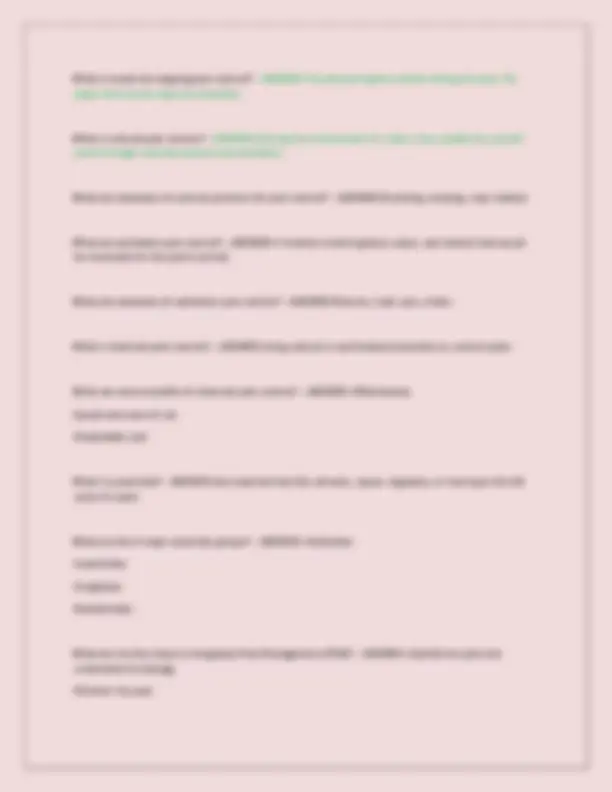
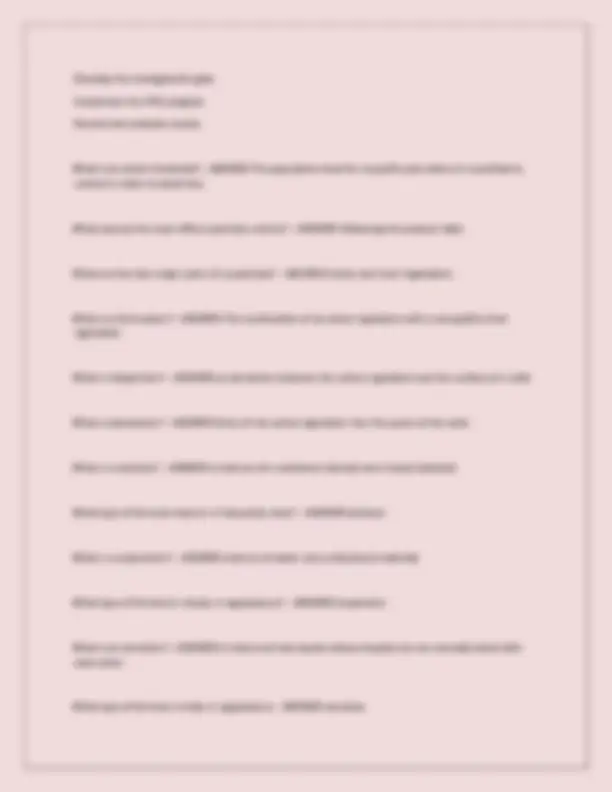
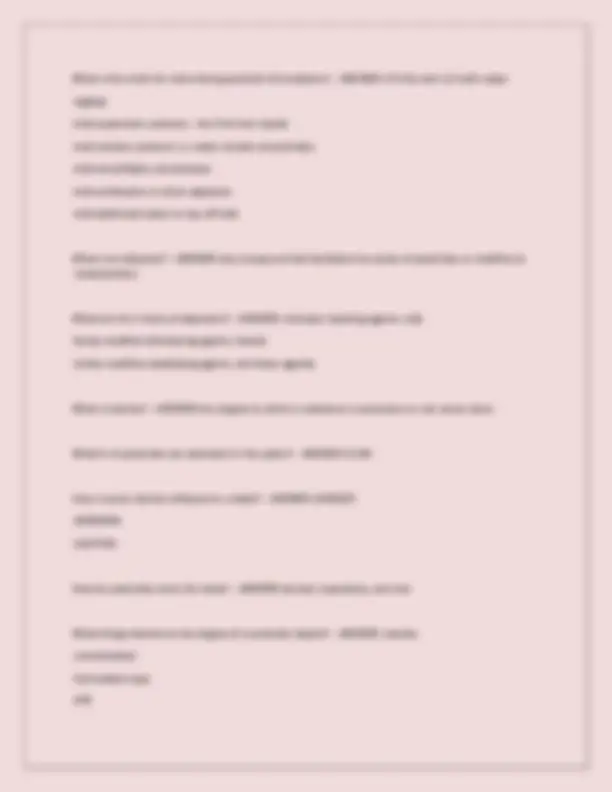
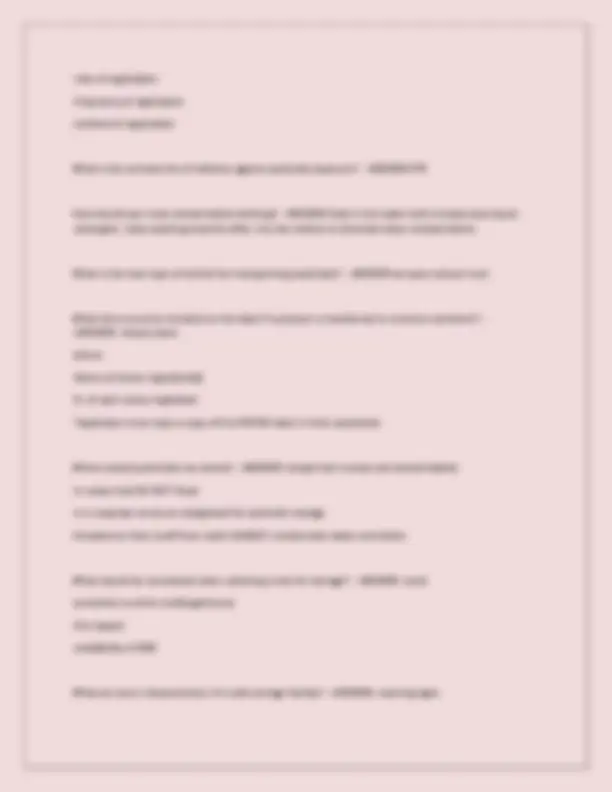
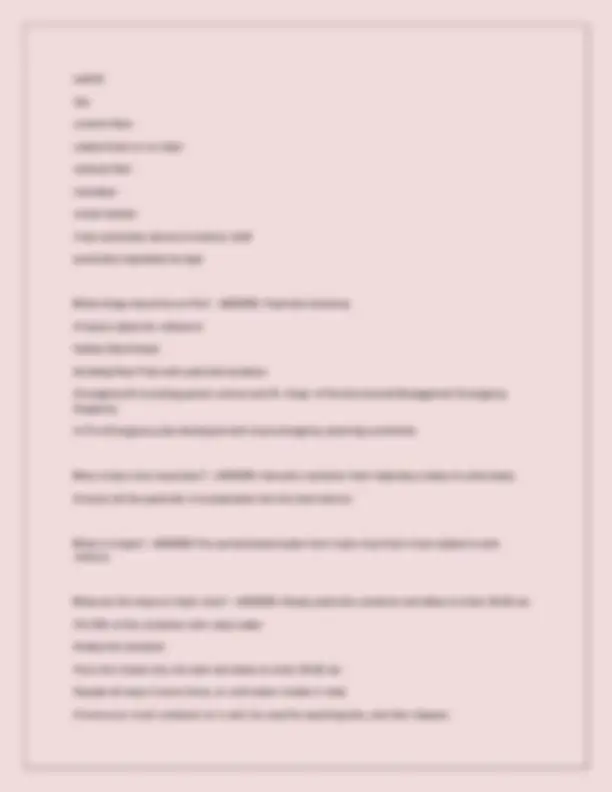
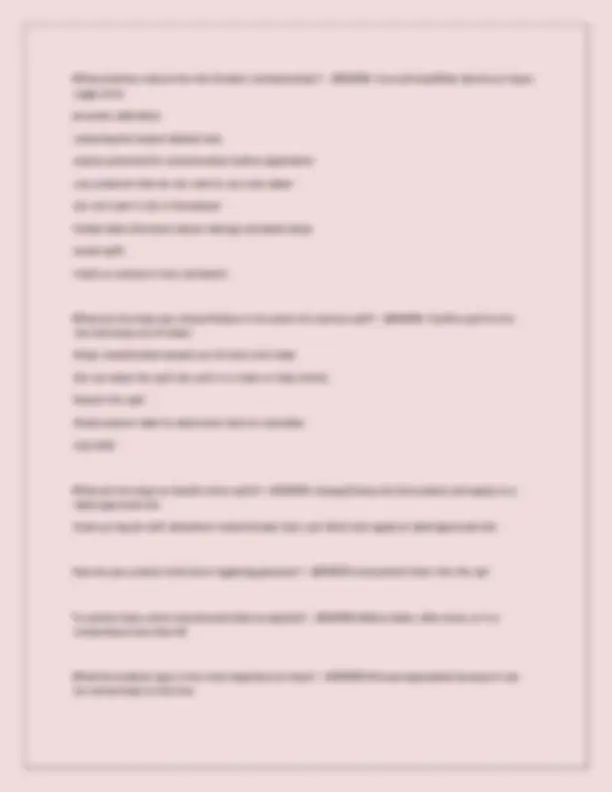
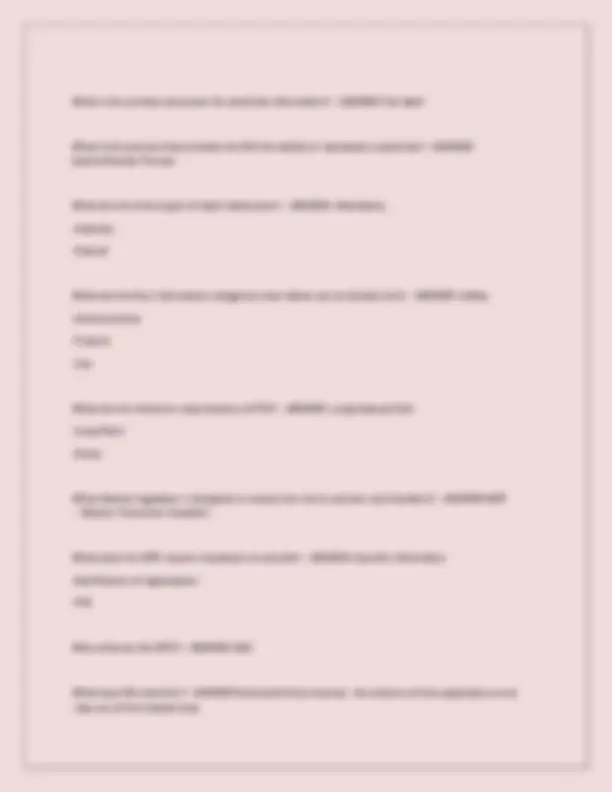
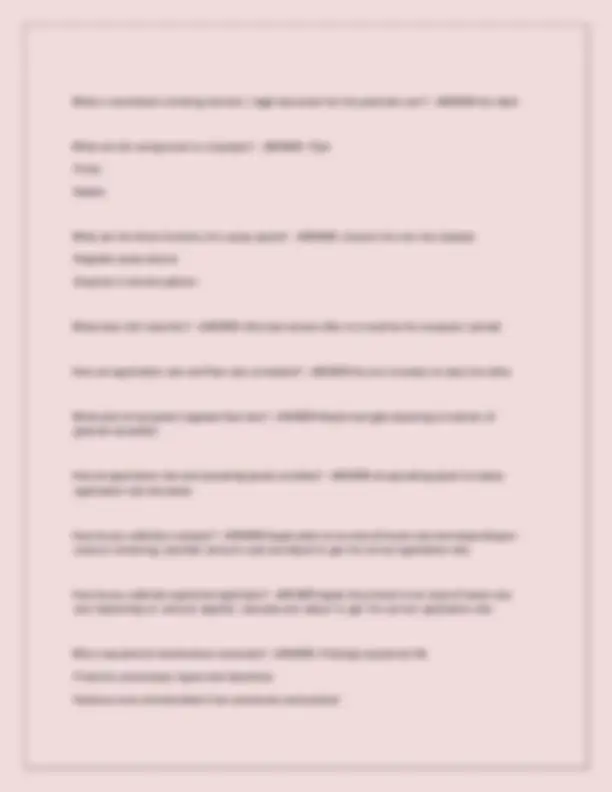
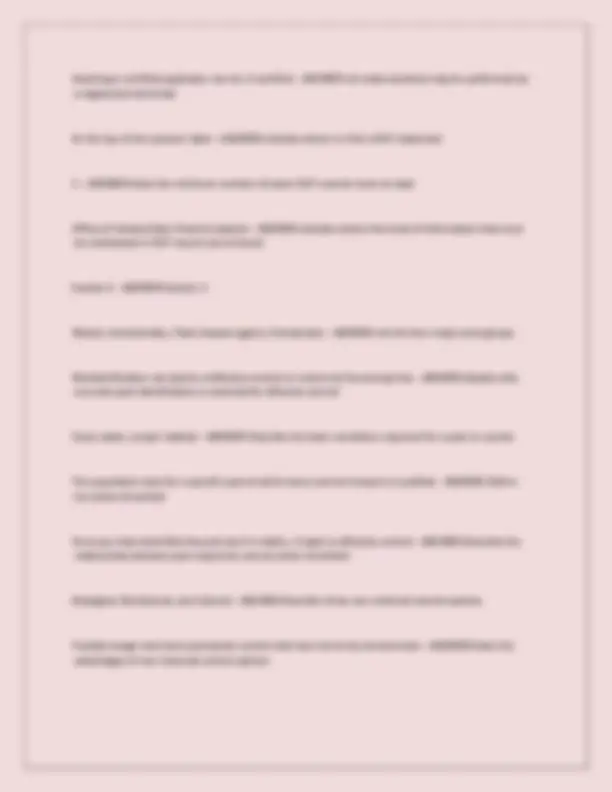
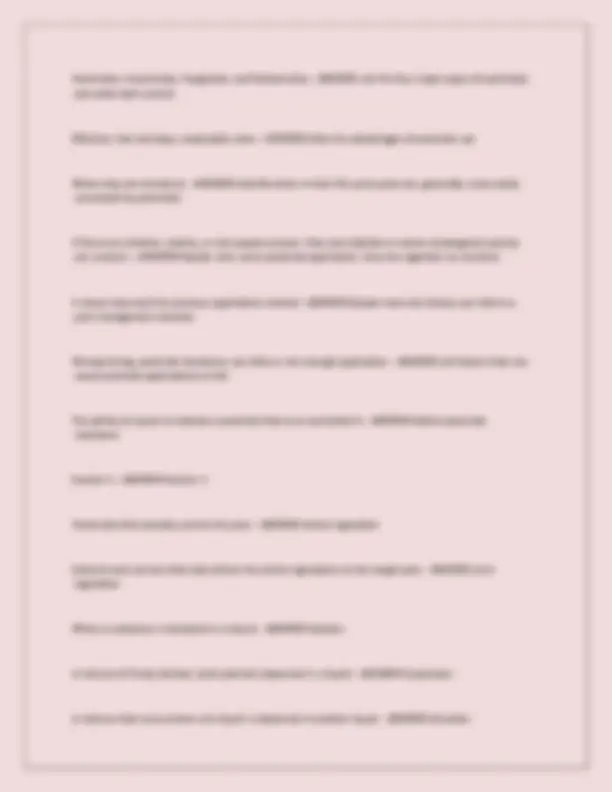
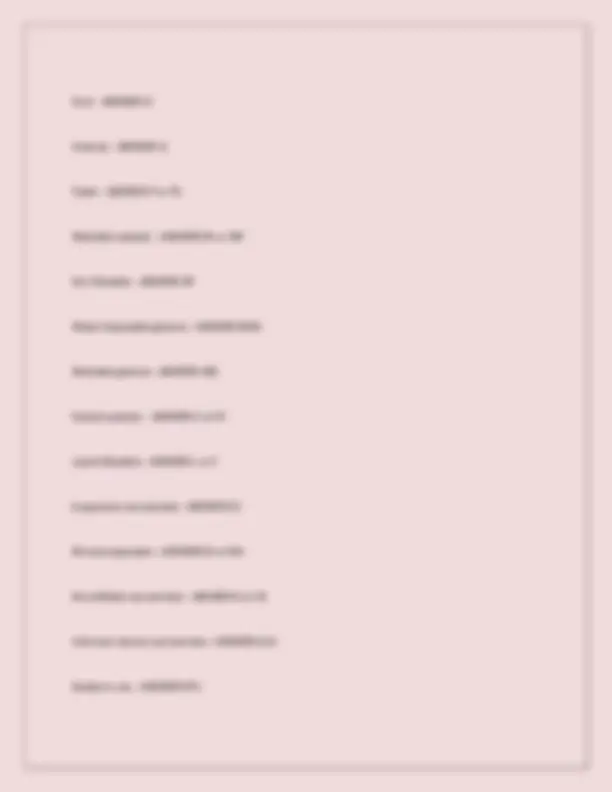

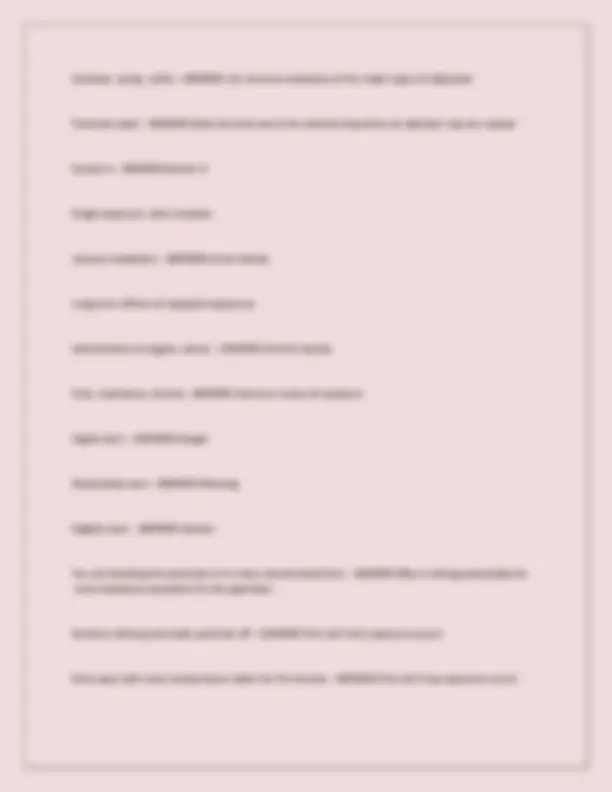
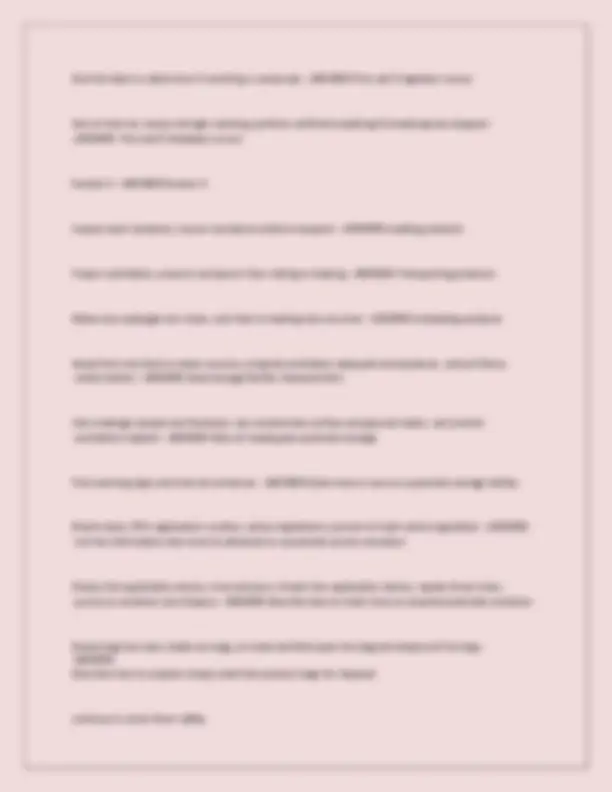
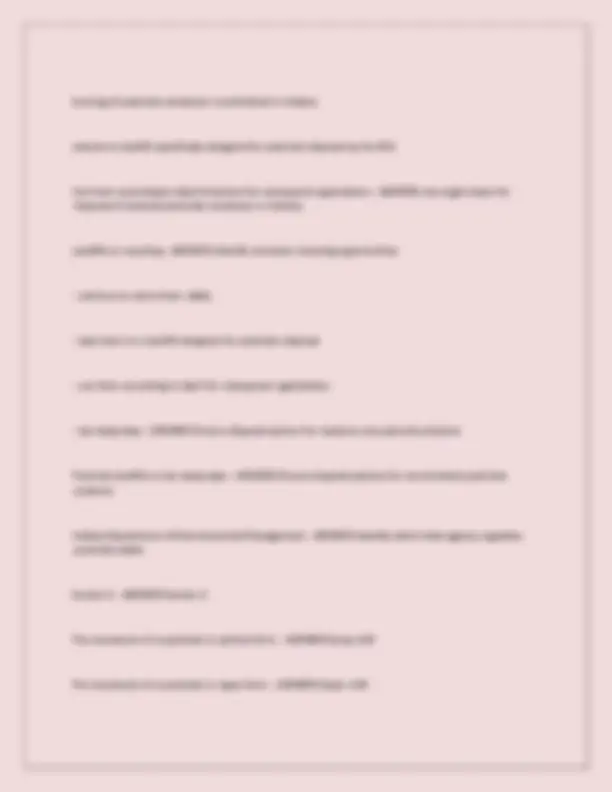
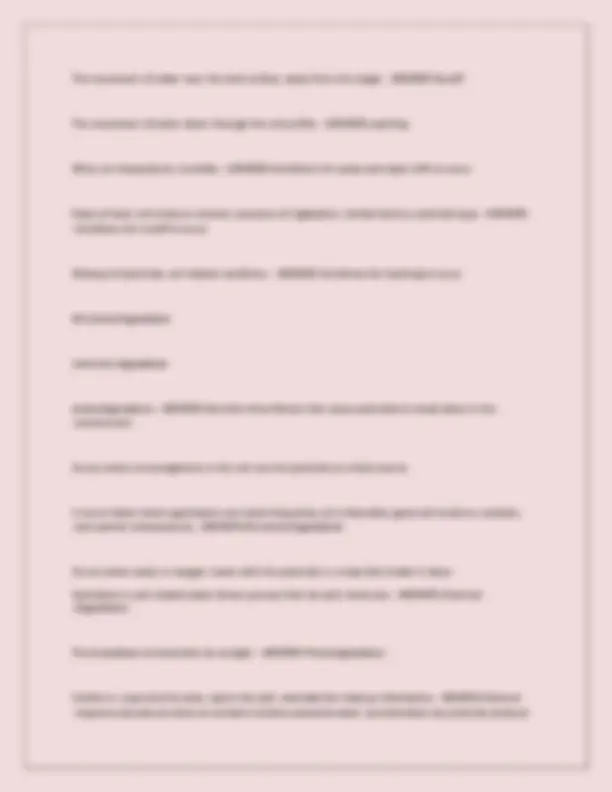
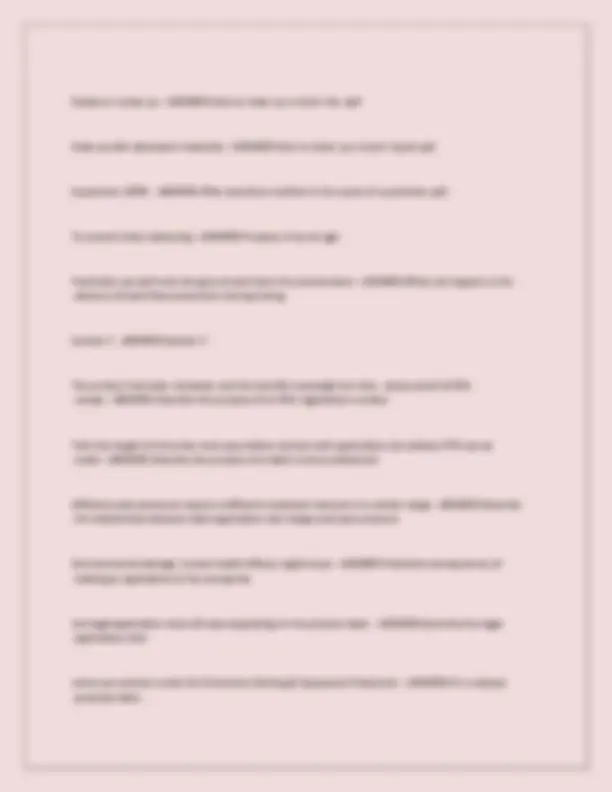
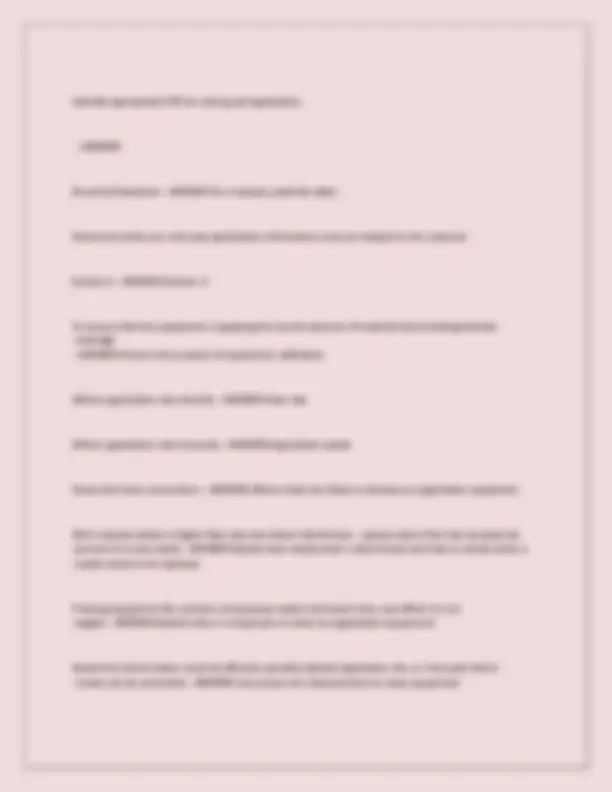
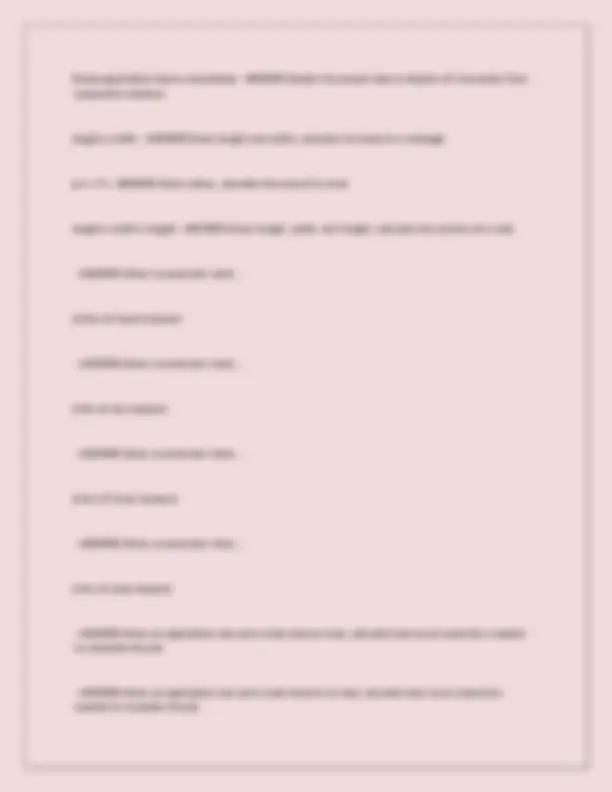


Study with the several resources on Docsity

Earn points by helping other students or get them with a premium plan


Prepare for your exams
Study with the several resources on Docsity

Earn points to download
Earn points by helping other students or get them with a premium plan
Community
Ask the community for help and clear up your study doubts
Discover the best universities in your country according to Docsity users
Free resources
Download our free guides on studying techniques, anxiety management strategies, and thesis advice from Docsity tutors
A comprehensive set of questions and answers related to the indiana pesticide applicator right of way exam. It covers various aspects of pesticide regulation, application, and safety, including fifra, rups, pesticide groups, formulations, and ipm. A valuable resource for individuals preparing for the exam, offering detailed explanations and practical insights.
Typology: Exams
1 / 28

This page cannot be seen from the preview
Don't miss anything!





















What is FIFRA and what does it regulate? - ANSWER-Federal Insecticide, Fungicide, and Rodenticide Act
Who provides Core and Category specific training programs? - ANSWER-Purdue Pesticide Programs What does CCH stand for? - ANSWER-Continuing Certifications Hours In regards to the Commercial License, who owns it? - ANSWER-the license belongs to the employer What is the term length for all pesticide applicators? - ANSWER- 5 years What are the requirements for supervision of Non-Certified Applicators? - ANSWER-1. Must remain onsite if the applicator is not an RT.
What is meant by trapping pest control? - ANSWER-The physical capture and/or killing of a pest. Fly paper and mouse traps are examples. What is cultural pest control? - ANSWER-Altering the environment to make it less suitable for specific pests through cultural practices and sanitation. What are examples of cultural practices for pest control? - ANSWER-Mulching, mowing, crop rotation What are sanitation pest control? - ANSWER-It involves removing food, water, and shelter that would be necessary for the pests survival. What are examples of sanitation pest control? - ANSWER-Manure, trash cans, drains What is chemical pest control? - ANSWER-Using natural or synthesized pesticides to control pests. What are some benefits of chemical pest control? - ANSWER--Effectiveness
What are soluble powders? - ANSWER-Similar to wettable powders, but they form a true solution that doesn't have to be continually agitated. What are the four types of liquid formulations? - ANSWER-Liquid flowables Microencapsulates Emulsifiable Concentrates Solutions What is a liquid flowable? - ANSWER-The powder is mixed with water prior to packaging, but usually needs more water added prior to use. What are microencapulates? - ANSWER-a solid surrounded by a plastic or starch coating What are emulsifiable concentrates? - ANSWER-An oil-soluble active ingredient dissolved in an oil based solvent that is then mixed with water and applied as a spray. What formulation type can cause deterioration of rubber and plastic equipment parts? - ANSWER- Emulsifiable concentrates What is a disadvantage to a solution? - ANSWER-it can cause skin damage Describe an aerosol - ANSWER-a delivery system that moves the ingredient to the target site in the form of a mist Describe a fumigant - ANSWER-a system where the active ingredient is delivered in the form of a gas What is the most hazardous pesticide product to use? - ANSWER-Fumigants What does the number in a formulation stand for? - ANSWER-It is the percent of active ingredient, by weight for solids, and by pounds for liquids.
What is the order for tank mixing pesticide formulations? - ANSWER--Fill the tank 1/3 with water
What are the steps in pressure rinsing? - ANSWER--Empty pesticide container and allow to drain 30- 60 sec
What practices reduce the risk of water contamination? - ANSWER--Use anti-backflow devices or leave a gap of air accurate calibration
What is the primary document for pesticide informaiton? - ANSWER-The label What is the process that provides the EPA the ability to reevaluate a pesticide? - ANSWER- Special Review Process What are the three types of label statements? - ANSWER--Mandatory
How many feet in 1 mile? - ANSWER- 5280 feet How many square feet in an acre? - ANSWER-43,560 square feet How many ounces in a gallon? - ANSWER- 128 ounces How many quarts in a gallon? - ANSWER- 4 quarts How many pints are in a gallon? - ANSWER- 8 pints How many tablespoons are in a gallon? - ANSWER- 256 tablespoons Equation for area of a circle - ANSWER-A=πr² Equation for diameter of a circle - ANSWER-circumference / π Equation for volume of a cube - ANSWER-length x width x height Office of Indiana State Chemist - ANSWER-Indicate which state agency is responsible for pesticide regulation Must follow all directions written on the label - ANSWER-Explain the legal obligations of the pesticide applicator with respect to the product label Anyone who is using Restricted use Pesticides, private, and commercial applicators - ANSWER-Describe who has to legally be certified to use pesticides in Indiana Applying to land that you own or rent - ANSWER-Private applicator
Can apply restricted & general use pesticides to the property of another for hire & restricted use pesticides to property of employer - ANSWER-Commercial applicators can apply restricted use pestisides under the supervision of a licensed applicator - ANSWER-Registered technicians 5 - ANSWER-State the number of years pesticide applicator certification is good for Retesting or certified credit hours - ANSWER-Discuss two options to maintain applicator certification www.isco.purdue.edu - ANSWER-Describe where to find reliable information regarding pesticide applicator continuing certification programs Links you to your firm of employment and the categories you are certified in - ANSWER-Discuss the purpose of the applicator license Every Cert. Category can put down pesticides in different areas for different reasons. W/O the Cert. you CANNOT put down pesticides in that area. - ANSWER-Explain the relationship between label uses, application sites, and certification categories A firm applying on the property of another for hire - ANSWER-State who has to maintain a pesticide business license Always unless the non certified employee is an RT - ANSWER-State when a certified, licensed supervisor must remain on site with a non certified employee Passing the core exam and their firm applying for an RT - ANSWER-State how a non certified employee can become a registered technician Safety gear, info sheet, product label, a way to contact by phone - ANSWER-List the items that a certified, licensed supervisor must provide a registered technician before sending them to work off site
Herbicides, Insecticides, Fungicides, and Rodentcides - ANSWER-List the four major types of pesticides and what each control Effective, fast and easy, reasonable costs - ANSWER-State the advantages of pesticide use When they are immature - ANSWER-Identify when in their life cycle pests are, generally, most easily controlled by pesticides If there are children, elderly, or sick people present. Also rare habitats or where endangered species are present - ANSWER-Explain why some pesticide application sites are regarded as sensitive It shows how well the previous application worked - ANSWER-Explain how site history can inform a pest management decision Wrong timing, pesticide resistance, too little or not enough application - ANSWER-List factors that can cause pesticide applications to fail The ability of a pest to tolerate a pesticide that once controlled it - ANSWER-Define pesticide resistance Section 3 - ANSWER-Section 3 Chemicals that actually control the pest - ANSWER-Active ingredient Solvents and carriers that help deliver the active ingredients to the target pest - ANSWER-Inert ingredient When a substance is dissolved in a liquid - ANSWER-Solution A mixture of finely divided, solid particles dispersed in a liquid - ANSWER-Suspension A mixture that occurs when one liquid is dispersed in another liquid - ANSWER-Emulsion
Dust - ANSWER-D Granule - ANSWER-G Pellet - ANSWER-P or PS Wettable powder - ANSWER-W or WP Dry Flowable - ANSWER-DF Water disposable granule - ANSWER-WDG Wettable granule - ANSWER-WG Soluble powder - ANSWER-S or SP Liquid flowable - ANSWER-L or F Suspension concentrate - ANSWER-SC Microencapsulate - ANSWER-M or ME Emulsifiable concentrate - ANSWER-E or EC Ultra low volume concentrate - ANSWER-ULV Ready to use - ANSWER-RTU